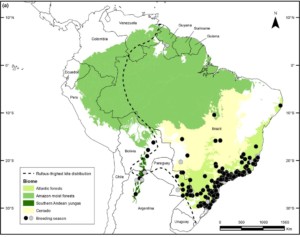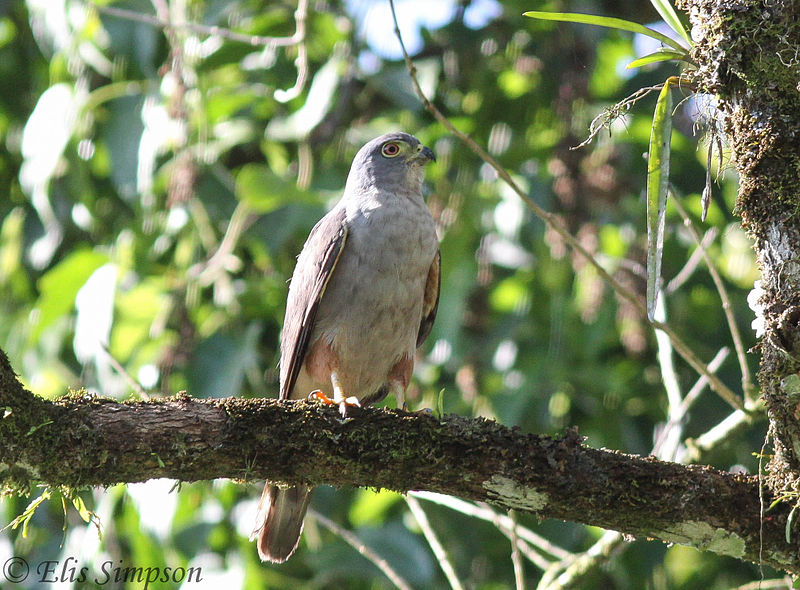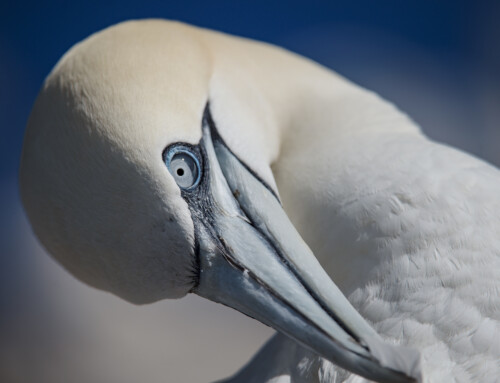LINKED PAPER
The Rufous‐thighed Kite Harpagus diodon is not an endemic breeder of the Atlantic Forest: lessons to assess Wallacean shortfalls. Areta, J.I. & Juhant, M. A. 2019. IBIS. DOI: 10.1111/ibi.12645. VIEW
Delineating the distribution of a widespread species is challenging, especially when it concerns a tropical species that breeds in dense rainforest. One solution is to rely on sightings by birdwatchers. Huge public databases, such as eBird, can help ornithologists pinpoint the range of widely occurring species. In 2015, scientists used this kind of citizen science data to study the Rufous-thighed Kite (Harpagus diodon), a South American bird of prey (Lees & Martin 2015). They concluded that this species exclusively breeds in the Atlantic Forest, the tropical forest that stretches from the Brazilian coast into Paraguay and Argentina.
Wallacean shortfalls
Recently, Juan Areta and Matías Juhant reassessed the situation of the Rufous-thighed Kite. Using previously unpublished and published records of this raptor, they show that its breeding area extends beyond the Atlantic Forest. For example, it has been known for over 100 years that the Rufous-thighed Kite breeds in the Austral Yungas in Bolivia (Lillo 1909). This observation has been confirmed with recent sightings (Hennessey et al. 2003). The citizen science project suffered from the so-called Wallacean shortfalls, the lack of complete knowledge on distributional patterns in nature (Crame 2004).

Figure 1 Documented (black) and undocumented (grey) breeding records of the Rufous-thighed Kite in South America. This data show that the breeding area is bigger than just the Atlantic Forest (light-green).
Eight rules
Citizen science is a very useful tool for ornithological research. However, scientists need to be careful when using this kind of data, as shown by the Rufous-thighed Kite. Therefore, the authors propose eight recommendations when using citizen science data.
- Follow Lees et al. (2014). This paper provides several measures for the reliable inventory of birds species.
- Do not abuse databases. Instead of relying on digital museum databases, go to the collections and inspect the specimens yourself (or contact the curators).
- Contact local museums. Local museum can contain a wealth of information from little studied areas.
- Contact local researchers and experienced observers. Local knowledge is extremely valuable and should not be overlooked.
- Read the relevant literature. Distribution information is often spread out over several sources. It is thus important to read unpublished reports and local journals in addition to the international literature.
- Study biogeographical patterns. Other organisms might have similar distributional patterns compared to your study species. Understanding these patterns can lead to important insights in your own research.
- Try to reject your preferred working hypotheses and question the robustness of your data. This recommendation applies to scientific research in general. Question everything and be open to other options.
- Critically assess life-cycle periods. In order to pinpoint breeding areas, it is important to understand the life cycle of the species of interest.
References
Crame, J. A. 2004. Pattern and process in marine biogeography: a view from the poles. In M.V. Lomolino & L.R. Heaney (eds) Frontiers of Biogeography: New Directions in the Geography of Nature: 271– 291. Sunderland: Sinauer. VIEW
Hennessey, A. B., Herzog, S. K. & Sagot, F. 2003. Lista Anotada de las Aves de Bolivia. Quinta Edición. Santa Cruz: Asociación Armonía/BirdLife International. VIEW
Lees, A. C. & Martin, R.W. 2015. Exposing hidden endemism in a Neotropical forest raptor using citizen science. Ibis 157: 103-114. VIEW
Lees, A. C., Naka, L. N., Aleixo, A., Cohn‐Haft, M., de Q. Piacentini, V., Dantas Santos, M. P. & Silveira, L. F. 2014. Conducting rigorous avian inventories: Amazonian case studies and a roadmap for improvement. Rev. Bras. Orn. 22: 107– 120. VIEW
Lillo, M. 1909. Notas ornitológicas. Apuntes Hist. Nat. 1: 21– 26. VIEW
Image credits
Featured image: Rufous-thighed Kite Harpagus diodon | Ellis Simpson | CC BY-SA 3.0 Wikimedia Commons



